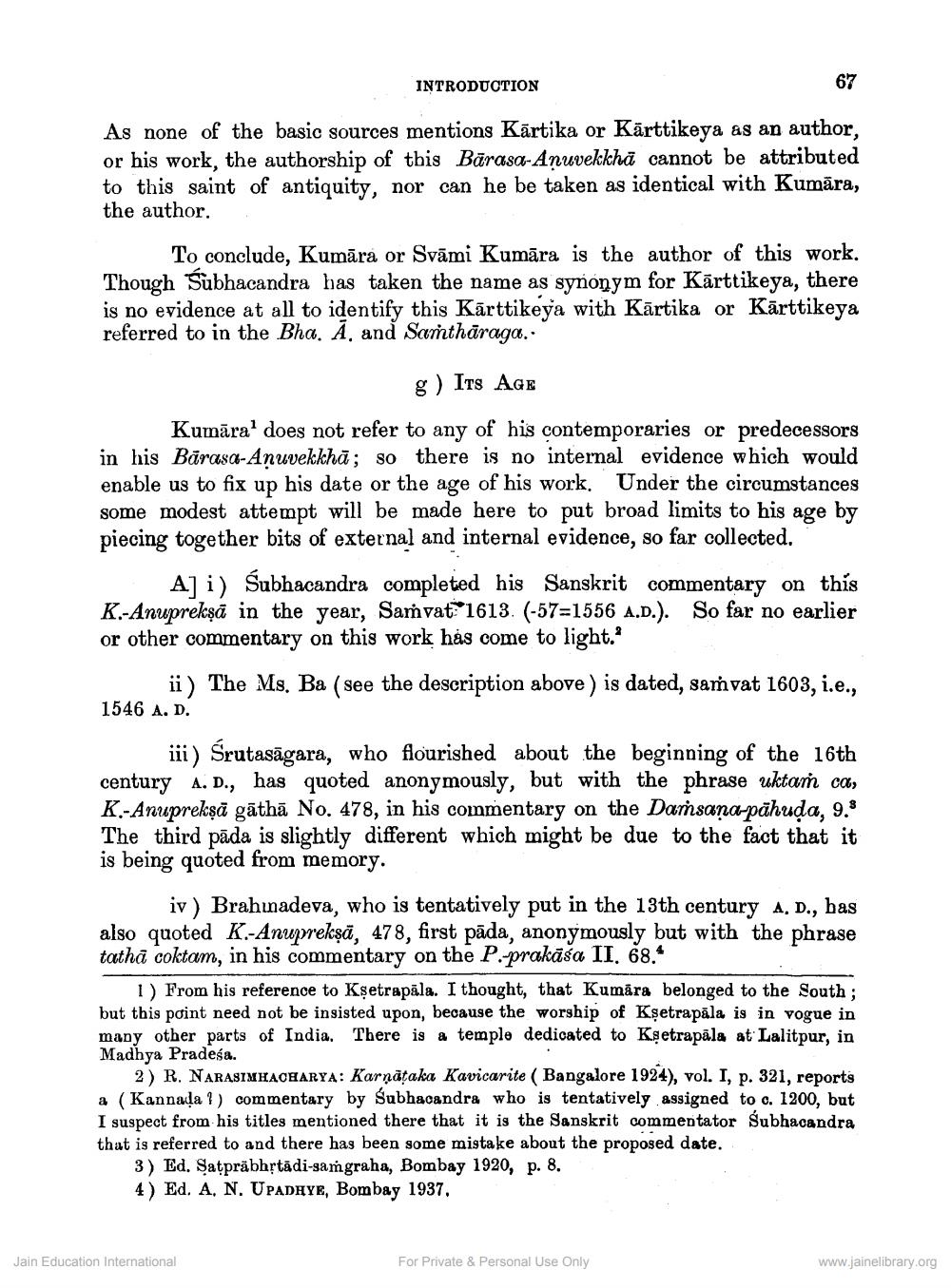________________
INTRODUCTION
As none of the basic sources mentions Kārtika or Kärttikeya as an author, or his work, the authorship of this Barasa-Anuvekkha cannot be attributed to this saint of antiquity, nor can he be taken as identical with Kumara, the author.
To conclude, Kumāra or Svami Kumāra is the author of this work. Though Subhacandra has taken the name as synonym for Karttikeya, there is no evidence at all to identify this Kārttikeya with Kārtika or Kārttikeya referred to in the Bha. A, and Samtharaga..
67
g) ITS AGE
Kumāra1 does not refer to any of his contemporaries or predecessors in his Barasa-Anuvekkha; so there is no internal evidence which would enable us to fix up his date or the age of his work. Under the circumstances some modest attempt will be made here to put broad limits to his age by piecing together bits of external and internal evidence, so far collected.
A]i) Subhacandra completed his Sanskrit commentary on this K.-Anuprekṣa in the year, Samvat 1613. (-57-1556 A.D.). So far no earlier or other commentary on this work has come to light.
ii) The Ms. Ba (see the description above) is dated, samvat 1603, i.e.,
1546 A. D.
iii) Śrutasagara, who flourished about the beginning of the 16th century A. D., has quoted anonymously, but with the phrase uktam ca, K.-Anuprekṣā gāthā No. 478, in his commentary on the Damsana-pahuḍa, 9.3 The third pada is slightly different which might be due to the fact that it is being quoted from memory.
iv) Brahmadeva, who is tentatively put in the 13th century A. D., has also quoted K.-Anuprekṣā, 478, first pada, anonymously but with the phrase tatha coktam, in his commentary on the P.-prakasa II. 68.*
1) From his reference to Kṣetrapala. I thought, that Kumara belonged to the South; but this point need not be insisted upon, because the worship of Kṣetrapala is in vogue in many other parts of India. There is a temple dedicated to Kṣetrapala at Lalitpur, in Madhya Pradeśa.
2) R. NARASIMHACHARYA: Karnataka Kavicarite (Bangalore 1924), vol. I, p. 321, reports a (Kannada) commentary by Subhacandra who is tentatively assigned to c. 1200, but I suspect from his titles mentioned there that it is the Sanskrit commentator Subhacandra that is referred to and there has been some mistake about the proposed date.
3) Ed. Satprabhṛtādi-samgraha, Bombay 1920, p. 8.
4) Ed. A. N. UPADHYE, Bombay 1937,
Jain Education International
For Private & Personal Use Only
www.jainelibrary.org




